Best Paradox Alternatives in 2026: 11 Tools for Faster, More Effective Hiring

Are you constantly wrestling with implementation challenges or struggling with Paradox's complex interface? Do you wish for more user-friendly features, better reporting and analytics, or perhaps more customization options? Maybe you're concerned about losing the personal touch in recruitment due to an over-reliance on technology. If these pain points sound familiar, it's time to explore Paradox alternatives.
Paradox Alternatives
the best candidates faster
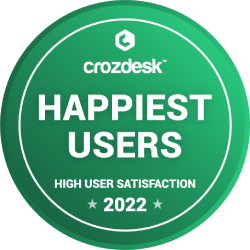
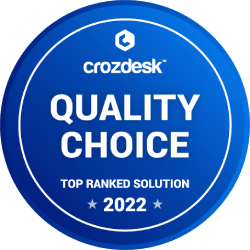
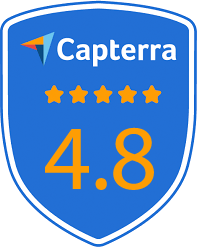
100Hires
100Hires is a very popular ATS among small and mid-sized companies, it holds numerous G2 badges, including 'Leader' in Recruitment Marketing and Candidate Relationship Management, 'Most Implementable' for Small-Business and Mid-Market, and 'Best Usability' across multiple categories. Ready to experience 100Hires? Get a demo or start your free trial today to see how 100Hires can optimize your hiring process. For more information on plans and options, check out our pricing page.
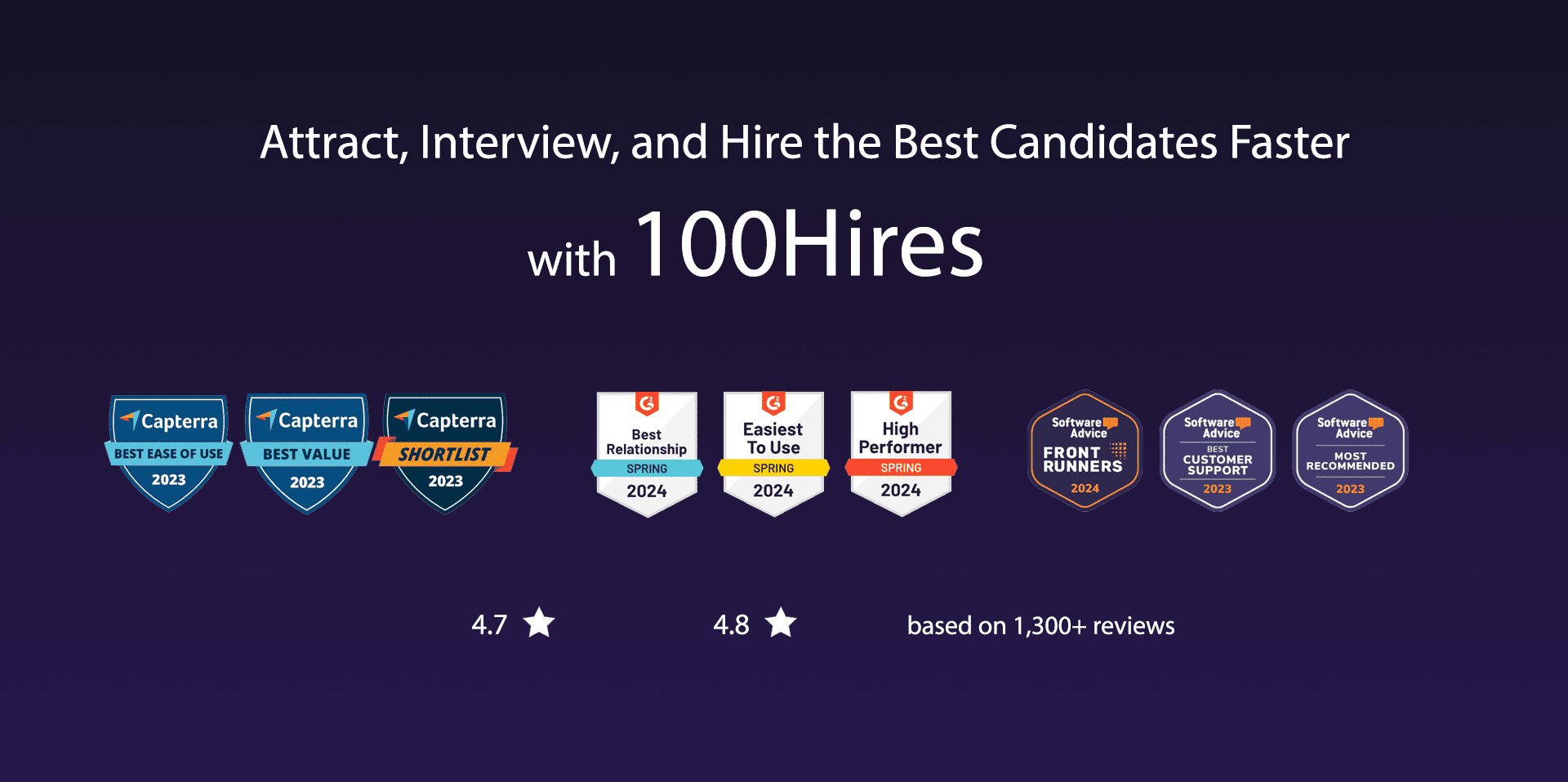
G2 rating: 4.8/5 based on 831 reviews.
Capterra rating: 4.9/5 based on 742 reviews.
1. Increased Applicant Reach:
- Post to major job boards (Indeed, LinkedIn, Glassdoor, etc.) with a single click, expanding job visibility and attracting more top talent.
- Real-time tracking and analytics allow clients to monitor job posting performance and optimize recruitment strategies.
2. Streamlined Recruitment Process:
- Centralized candidate data with easy access to interaction history and candidate statuses.
- Reduces duplicate communication and enhances the candidate experience.
3. Time Savings with AI:
- AI-generated job descriptions, application forms, and interview questions reduce time spent on resume screening.
- AI-driven candidate ranking helps prioritize the best candidates quickly.
4. Automation for Efficiency:
- Integrated scheduling with Google or Outlook calendars, knockout questions, duplicate detection, and automated communications (notifications, follow-ups) reduce manual effort.
- Zapier integration allows seamless connectivity with third-party tools.
100Hires Pricing:
100Hires offers three pricing tiers: Start at $75/month (billed annually) for companies with minimal hiring needs, supporting up to 3 jobs and 1 user. The Advanced plan, at $199/month, includes unlimited jobs, candidates, and users, plus features like automated emails and a custom domain. The Pro plan, at $399/month, adds advanced sourcing tools, contact enrichment, and onboarding support, ideal for sourcing passive candidates.
Phenom
Phenom, founded in 2010, is an applicant tracking system based in India that raised $161.4 million and acquired Tydy, Tandemploy, Talentcube, Endouble, and My Ally.
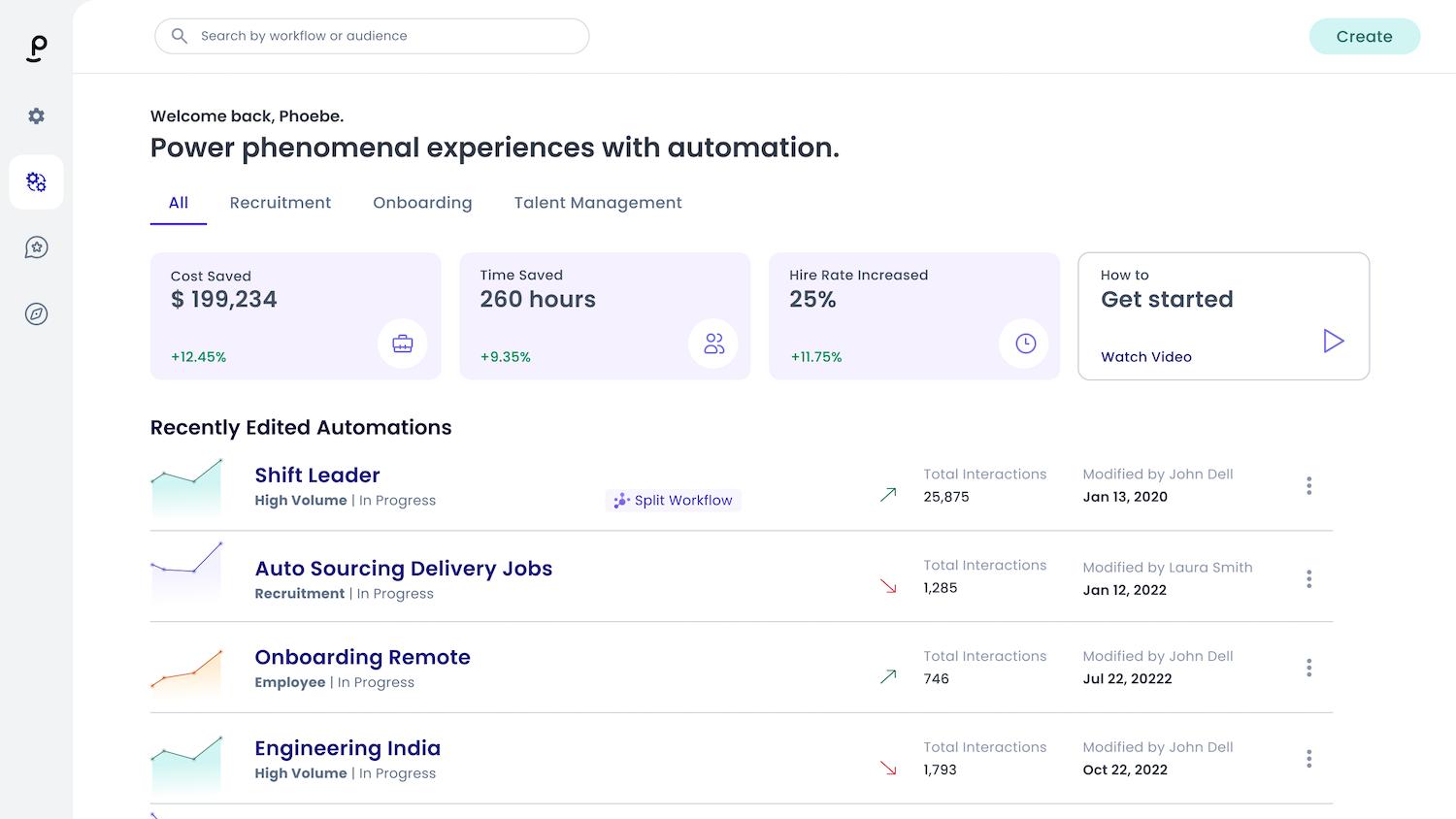
G2 rating: 4.4/5 based on 373 reviews.
Capterra rating: 3.9/5 based on 13 reviews.
Phenom's typical customers are primarily based in the United States (36.22%), with smaller shares in India (11.14%), the United Kingdom (7.41%), Australia (6.24%), and Germany (5.69%). Key industries include Insurance (27%), Biotechnology (18%), Financial Services (9%), Telecommunications (9%), and Transportation/Trucking/Railroad (9%).
According to G2, 84% of customers have more than 1000 employees, 8% have 51-1000 employees, and 8% have fewer than 50 employees. Capterra reviews show 41.7% of customers with more than 10,000 employees, and smaller shares across other size categories.
Phenom Pricing:
Phenom's pricing starts at approximately $10,000 per month, with a per-user model that scales with the number of users, making it suitable for various organization sizes. Pricing varies based on specific needs, including selected modules, integration requirements, and the level of support and customization required. Custom quotes are available to match the unique requirements of each organization. For a precise estimate, contacting Phenom directly for a tailored quote is recommended.
Phenom Pros:
- Ease of Use and User-Friendly Interface (mentioned 15 times): Users appreciate Phenom's intuitive platform, highlighting its user-friendly nature that simplifies the recruitment process and makes it easy for new users to learn and navigate.
- Efficient Candidate Management and Organization (mentioned 12 times): The ability to sort candidates into different lists and projects, manage pipelines, and track candidates efficiently helps recruiters stay organized and know exactly where each candidate stands in the hiring process.
- Automation and Time-Saving Features (mentioned 10 times): Features like bulk emails, SMS messaging, automated scheduling, and the use of AI for candidate screening are valued for saving time and automating repetitive tasks, allowing recruiters to focus on more strategic activities.
Phenom Cons:
- Integration and Implementation Challenges (mentioned 12 times): Users have experienced difficulties with integrating Phenom into existing ATS systems like Cornerstone and Workday, noting that the implementation process can be lengthy, complex, and sometimes not fit for purpose initially.
- Customer Support and Response Times (mentioned 8 times): While support is often effective, users have noted delays in response times and resolution of issues, expressing a desire for faster turnaround and more proactive support.
- Complexity and Usability Issues (mentioned 7 times): Some users find Phenom's platform complex and not as intuitive as they would like, particularly in navigating between different functions such as projects, lists, and spotlights.
- Limited Email Integration and Manual Data Entry (mentioned 5 times): Users wish for better integration with email platforms like Outlook to automatically sync email exchanges with candidates into the CRM, reducing the need for manual data entry.
- Customization and Functionality Limitations (mentioned 4 times): There are calls for more customization options, particularly in campaign touchpoints and the ability to create personal email and video interview templates without affecting other users.
- Bugs and System Performance Issues (mentioned 3 times): Some users report encountering bugs and performance issues, such as slow loading times and system glitches, that can hinder the user experience.
- Learning Curve and Training (mentioned 2 times): The platform's wide range of functionalities can lead to a steep learning curve, with some users feeling that training modules do not always adequately prepare them for using the system effectively.
- Lack of Advanced Reporting and Analytics (mentioned 1 time): Users desire more robust and customizable reporting and analytics capabilities to gain deeper insights into recruitment processes.
- Insufficient Texting Capabilities (mentioned 1 time): The lack of texting capabilities from the platform is noted as a drawback, as many candidates prefer mobile communication.
- Content Management System (CMS) Limitations (mentioned 1 time): Some users find the CMS for website content to be limited in terms of customization, making it challenging to create unique and engaging career sites.
Pinpoint
Pinpoint, founded in 2018, is an applicant tracking system based in the United Kingdom.
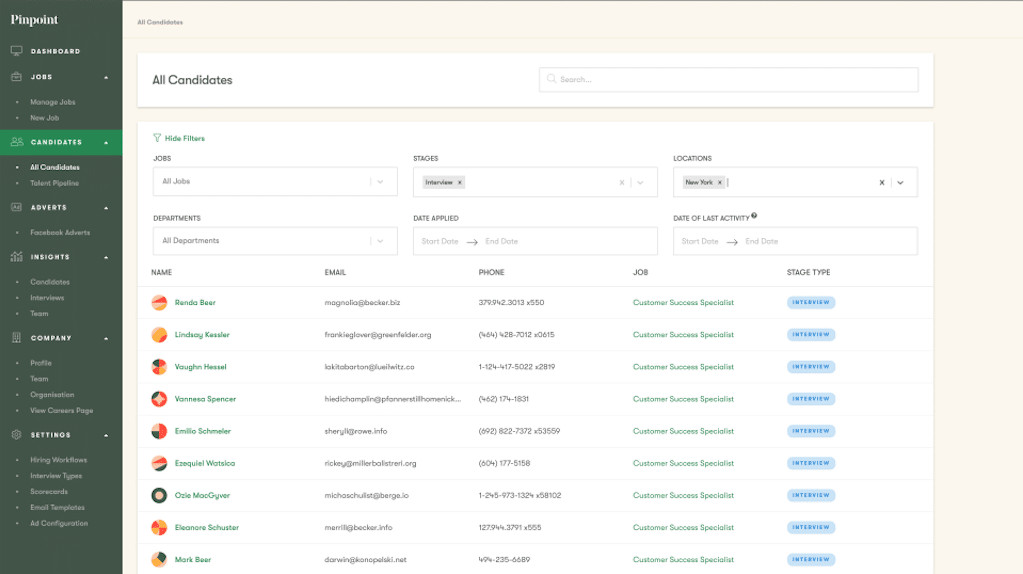
G2 rating: 4.6/5 based on 79 reviews.
Capterra rating: 4.5/5 based on 55 reviews.
Pinpoint's typical customers are primarily based in the United States (29.16%) and the United Kingdom (24.65%), with smaller shares in India (4.63%), the Philippines (4.46%), and Kenya (3.46%). Key industries include Financial Services (20%), Utilities (11%), Telecommunications (10%), Information Technology and Services (8%), and Investment Management (5%).
According to G2, 60% of customers have 51-1000 employees, 22.2% have fewer than 50 employees, and 17.8% have more than 1000. Capterra reviews show 32.3% of customers with 51-200 employees, and smaller shares across other size categories.
Pinpoint Pricing:
Pinpoint offers premium, quote-based pricing plans without a free trial. Pricing is customized based on specific business needs and features required.
Pinpoint Pros:
- User-Friendly Interface and Ease of Use (mentioned 18 times): Users appreciate Pinpoint's intuitive design and easy navigation, which simplifies the recruitment process and makes it accessible for users of all skill levels.
- Efficient Candidate Management (mentioned 12 times): The platform's ability to organize candidates, manage applications, and streamline the hiring workflow is highly valued, making it easier for recruiters to track the progress of each candidate.
- Effective Communication with Candidates (mentioned 10 times): Features like bulk messaging, email campaigns, and integrated communication tools are praised for facilitating efficient outreach to candidates and improving engagement throughout the recruitment process.
Pinpoint Cons:
- Feature Availability and Development (mentioned 2 times): Users appreciate the continuous development of new features but note that some desired functionalities are still in development or unavailable.
- Scheduling Limitations (mentioned 2 times): There are challenges with scheduling multiple candidates with different hiring managers for the same role simultaneously, and improvements are desired in the scheduling feature for better detail visibility in calendar invites.
- Navigation and Usability Concerns (mentioned 2 times): Users wish for fewer clicks to move candidates around and for a more intuitive way to switch between pages or candidates without experiencing delays.
- Integration with Other Platforms (mentioned 1 time): The lack of integration with platforms like ATS, which can cause duplication of workflows, and a desire for better integration with email platforms like Outlook for syncing communications.
- Data Management (mentioned 1 time): Concerns about not being able to retrieve deleted information and the need for better management of important fields when inputting candidates.
- Email Deliverability (mentioned 1 time): Some in-platform emailing gets sent to candidates' promotions folders, which could affect the visibility of communications.
- Customization and Reporting (mentioned 1 time): A desire for customizable dashboards and more detailed reporting capabilities to better match managerial interests.
- User Guide and Training (mentioned 1 time): A suggestion for a user guide for line managers to aid in training and better utilization of the system.
- Design and Aesthetic Limitations (mentioned 1 time): While the user interface is generally liked, there's a desire for more customization options to enhance the look and feel of the recruitment website generated by Pinpoint.
- Bias and Diversity Features (mentioned 1 time): The anti-bias feature was confusing for new users, suggesting a need for better initial guidance on system functionality.
Recruitee
Recruitee, founded in 2015, is an applicant tracking system based in Poland and the Netherlands that acquired Sympa.
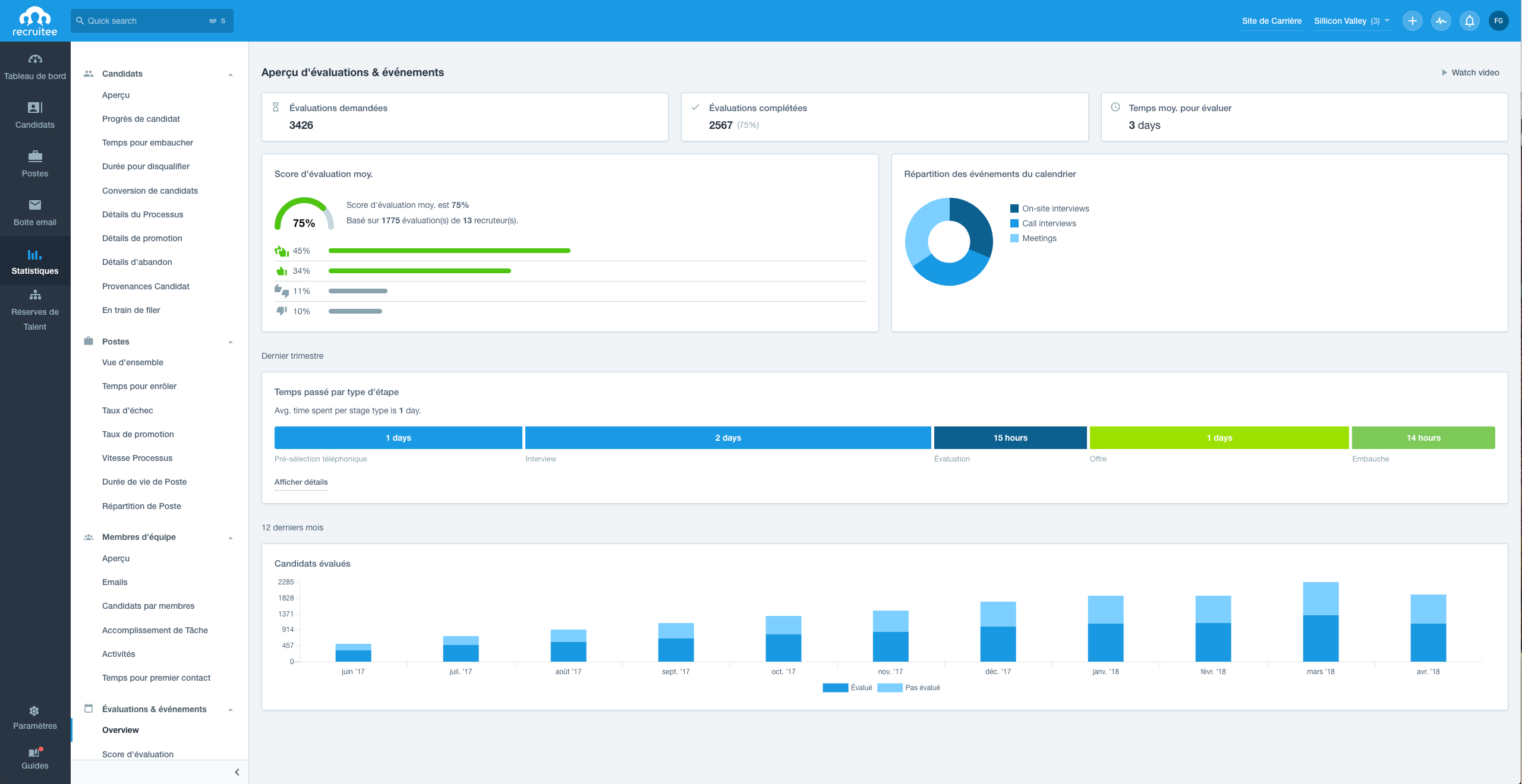
G2 rating: 4.5/5 based on 430 reviews.
Capterra rating: 4.4/5 based on 184 reviews.
Recruitee's typical customers are primarily based in the Netherlands (14.1%), the United States (13.58%), Germany (9.4%), India (7.11%), and the United Kingdom (6.27%). Key industries include Information Technology and Services (16%), Computer Software (13%), Internet (7%), Human Resources (7%), and Staffing and Recruiting (5%).
According to G2, 54% of customers have 51-1000 employees, 36% have fewer than 50 employees, and 10% have more than 1000. Capterra reviews show 31.2% of customers with 11-50 employees and 26.4% with 51-200 employees, with smaller shares across other size categories.
Recruitee Pricing:
Recruitee offers three main plans, adjusted for company size:
Start ($249/month, annual contract): Ideal for businesses starting their hiring journey, includes 5 job slots, unlimited users, multi-job posting, single-page careers site, CV parsing, email/calendar sync, pipeline automations, talent pools, standard reporting, and optional add-ons like SSO and texting.
Grow ($311–$936/month, depending on company size): Designed for fast-growing teams with unlimited job slots and users, it includes all Start features, plus multi-page/multi-language careers sites, referral programs, event scheduling, candidate screening with questionnaires and knockout questions, multi-location support, custom reporting, and an optional onboarding add-on.
Optimize (Custom pricing, contact sales for details): Tailored for recruitment agencies and large enterprises, offering unlimited job slots and users, all Grow features, along with onboarding support, a dedicated customer success manager, requisition approvals, fair evaluations, BI tool integration, SSO, API support, and optional texting.
Recruitee Pros:
- User-Friendly and Intuitive Interface (mentioned 23 times): Users appreciate Recruitee's ease of use, intuitive design, and simple navigation, making it accessible for both HR professionals and hiring managers.
- Comprehensive Features and Functionality (mentioned 18 times): The platform offers a wide range of features, including one-way video interviews, email templates, automation, and a customizable ATS pipeline, which streamline the recruitment process.
- Effective Collaboration Tools (mentioned 12 times): Recruitee facilitates collaboration among team members, allowing for easy sharing of candidate information, feedback, and interview notes within the platform.
Recruitee Cons:
- Limited Customization and Integration Capabilities (mentioned 12 times): Users desire more flexibility in customizing the career pages, job descriptions, and integrating with other systems like CRMs and VOIP services.
- Feature Limitations and Requests for Enhancements (mentioned 11 times): There's a call for more advanced features, such as better reporting tools, more automation options, VOIP integration, and improvements to the talent pool functionality.
- User Interface and Experience Issues (mentioned 8 times): Some users find certain aspects of the UI cluttered or challenging to navigate, particularly when editing job descriptions or managing candidate profiles.
- Pricing and Subscription Model Concerns (mentioned 7 times): Concerns were raised about the pricing model, particularly regarding the cost-effectiveness and flexibility of the subscription plans.
- Technical Glitches and Bugs (mentioned 6 times): Users have encountered technical issues, such as bugs with email editing, event scheduler disconnections, and occasional platform lag.
- Limited Global View and Analytics (mentioned 5 times): There's a desire for a more comprehensive global pipeline view and more in-depth analytics and reporting features.
- Customer Support and Service Issues (mentioned 4 times): While many users praise the support, some have experienced delays or dissatisfaction with the customer service response.
- Data Management and Export Limitations (mentioned 3 times): Users would like more robust options for data management, including easier ways to export and manipulate data outside of Recruitee.
- Job Posting and Advertisement Management (mentioned 2 times): Some users find the job posting process, particularly the management of live and edited jobs, to be cumbersome or limiting.
- Learning Curve and Onboarding (mentioned 1 time): A few users mentioned a steep learning curve or the need for more guidance during the initial setup and onboarding process.
SmartRecruiters
SmartRecruiters, founded in 2010, is an applicant tracking system based in Poland that raised $225 million and acquired Attrax, jobpal, and Jobspotting.
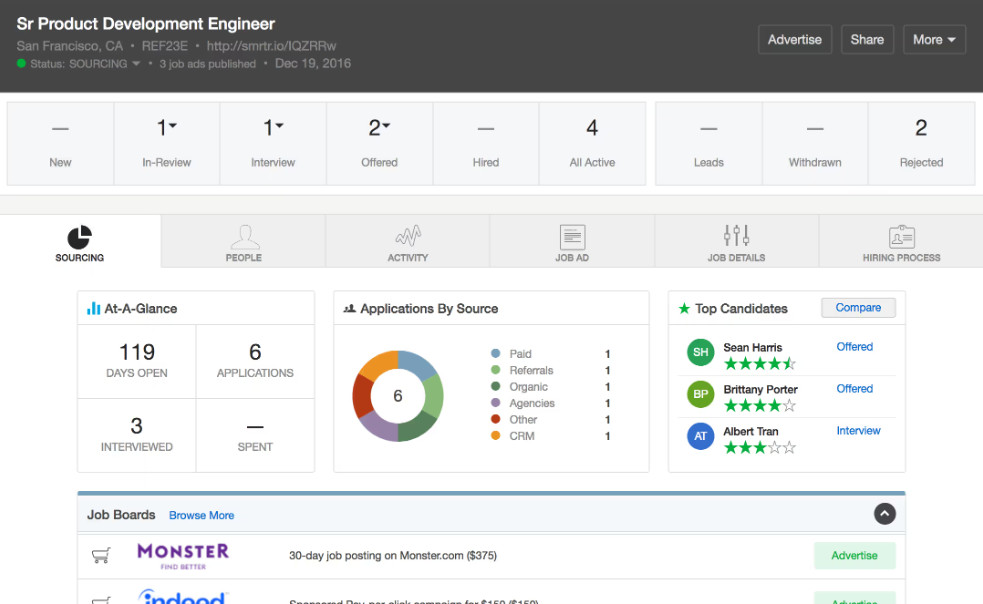
G2 rating: 4.3/5 based on 492 reviews.
Capterra rating: 4.2/5 based on 141 reviews.
SmartRecruiters' typical customers are primarily based in the United States (34.77%), with smaller shares in India (10.37%), the United Kingdom (6.25%), Canada (6.11%), and France (4.42%). Key industries include Computer Software (16%), Human Resources (12%), Staffing and Recruiting (10%), Hospital & Health Care (6%), and Education Management (6%).
According to G2, 56% of customers have 51-1000 employees, 12% have fewer than 50 employees, and 32% have more than 1000.
SmartRecruiters Pricing:
SmartRecruiters offers flexible, quote-based pricing typically ranging from $6 to $10 per employee per month (PEPM) or $39 to $100 per user per month. For companies with more than 50 employees, annual contracts often start around $10,000, with base pricing at approximately $850 per month. Organizations with larger employee counts may receive adjusted rates, while smaller companies may pay slightly higher per-user fees. Additional modules like CRM and onboarding may increase costs, which are based on company headcount and selected features.
SmartRecruiters Pros:
- User-Friendly Interface and Ease of Use (mentioned 12 times): Users appreciate the simple and intuitive interface, making it easy for both recruiters and hiring managers to navigate and use the platform.
- Integration with LinkedIn and Other Services (mentioned 4 times): The ability to integrate with LinkedIn and other services like Docusign for seamless candidate outreach and offer management is highly valued.
- Collaborative Candidate Management (mentioned 3 times): The platform facilitates collaborative candidate management, allowing team members to work in sync, rate candidates, and streamline the hiring process.
SmartRecruiters Cons:
- Difficulty in Navigation and Specific Actions (mentioned 2 times): Users find it tedious to switch between jobs and navigate to specific candidates within a job, especially if they are not in the expected stage.
- Integration and Customization Limitations (mentioned 2 times): Some users expressed a desire for more customization options and noted challenges in integrating SmartRecruiters with other ATS systems like Ceipal.
- Issues with Candidate Information Management (mentioned 2 times): There are difficulties in managing candidate information, such as merging candidates and keeping track of information provided by each candidate across different job applications.
- User Interface and Experience Concerns (mentioned 2 times): Although the user interface is generally liked, some users mentioned that it could be improved, and the software sometimes experiences technical glitches.
- Problems with Scheduling and Communication Features (mentioned 2 times): Users reported issues with the scheduling tool not being user-friendly and a lack of customization in initial messages to candidates, which could lead to candidates opting out of the process.
- Data Accuracy and Loss Issues (mentioned 2 times): Concerns were raised about the accuracy of contact information and a significant issue where user data, including job posts and candidate information, was deleted without notice.
- Limited Reporting and Analytical Tools (mentioned 1 time): Users find it challenging to create reports due to the vast number of fields available, indicating a need for more streamlined reporting capabilities.
- Job Posting and Candidate Dispositioning Limitations (mentioned 1 time): There is frustration with the job closing automatically upon hiring and the inability to bulk disposition candidates, requiring manual, time-consuming processes.
- Concerns Over Confidential Data Visibility (mentioned 1 time): Users are concerned about the open nature of the software, where confidential candidate data and internal communications are visible to anyone attached to the hiring team.
- General Dislikes and Suggestions for Improvement (mentioned 1 time): While some users expressed overall satisfaction with SmartRecruiters, they suggested improvements such as more automation, better graphic options in the email editor, and enhancements to the self-scheduling feature.
TalentReef
TalentReef, founded in 1997, is an applicant tracking system that raised $4 million and was acquired by Mitratech.
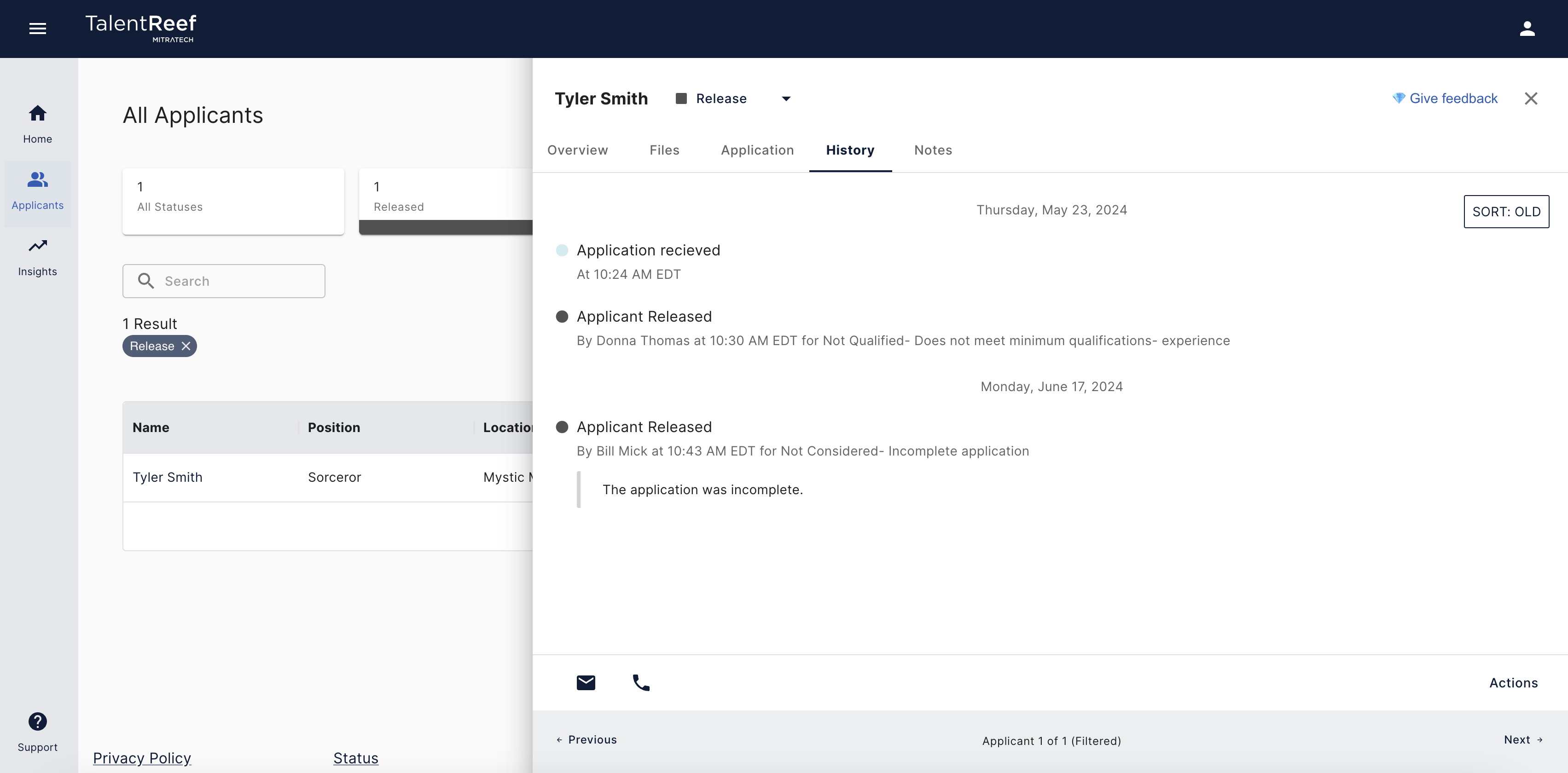
G2 rating: 3.8/5 based on 41 reviews.
Capterra rating: 3.5/5 based on 86 reviews.
TalentReef's typical customers are primarily based in the United States (99.24%), with small shares in Pakistan (0.55%) and Vietnam (0.21%). Key industries include Food & Beverages (48%), Retail (18%), Hospitality (15%), Restaurants (10%), and Hospital & Health Care (3%).
According to G2, 56.1% of customers have 51-1000 employees, 4.9% have fewer than 50 employees, and 39% have more than 1000. Capterra reviews show 20.9% of customers with 1,001-5,000 employees, and smaller shares across other size categories.
TalentReef Pricing:
TalentReef’s pricing starts at $55 per user per month, with options for both employee-based and location-based pricing structures. While specific plan details aren’t publicly listed, TalentReef offers flexible options, including a free plan, subscription, and free trial.
TalentReef Pros:
- User-Friendly Interface (mentioned 10 times): TalentReef is praised for its user-friendly interface for both hiring managers and candidates, making the application and hiring process straightforward and efficient.
- Efficient Onboarding and Electronic Documentation (mentioned 8 times): Users appreciate the electronic onboarding process and the ability to manage employee files electronically, which streamlines the hiring process and reduces paperwork.
- Customer Support and Account Management (mentioned 7 times): Having a responsive and helpful designated account manager and customer support team is highlighted as a significant advantage, aiding in resolving issues and improving system use.
TalentReef Cons:
- Customer Service and Support Issues (mentioned 14 times): Users report difficulties with customer service, including slow response times, unresolved tickets, and a lack of helpful assistance. Some users also mentioned the challenge of contacting support and the need to rely on account managers for resolutions.
- Integration and Technical Glitches (mentioned 8 times): There are ongoing issues with integrations, such as with Textus and Indeed, and users experience technical glitches, system shutdowns, and errors that affect the user experience and functionality.
- Limited Customization and Functionality (mentioned 7 times): Users desire more customization options, including the ability to add new positions or locations without submitting a ticket, and express frustration over the system's workflow limitations and lack of features like automated functions and more comprehensive onboarding tools.
- User Interface and Usability Challenges (mentioned 6 times): Some users find the platform clunky and not intuitive, with a steep learning curve for new users. There are also comments about the system being slow or freezing, especially when handling multiple applicants.
- Applicant and Onboarding Issues (mentioned 5 times): Difficulties with the onboarding process, including lost paperwork and complications with resetting passwords or resending onboarding emails, are mentioned. Users also note that the system does not effectively prevent duplicate applications.
- Limited Applicant Generation and Quality (mentioned 3 times): There are concerns about the platform not generating enough applicants or attracting low-quality candidates, which affects the hiring process's efficiency.
- Lack of Mobile Friendliness (mentioned 2 times): The platform's mobile usability is criticized, with suggestions for improvements to make it more accessible for applicants using mobile devices.
- Slow System Performance (mentioned 2 times): Users report sluggish performance and delays in accessing forms and applications, which can hinder the recruitment process.
- Lack of Comprehensive Training Resources (mentioned 1 time): A desire for more tutorials and training resources to better understand and utilize the platform's features effectively.
- Inadequate Reporting and Analytics (mentioned 1 time): Users would like to see improvements in reporting functionality to better track and analyze recruitment activities.
Taleo
Taleo, founded in 2012, is an applicant tracking system that acquired Jobpartners, Cytiva Software, Learn.com, Worldwide Compensation, Vurv Technology, WetFeet, JobFlash, Recruitforce.com, and White Amber, and was acquired by Oracle.
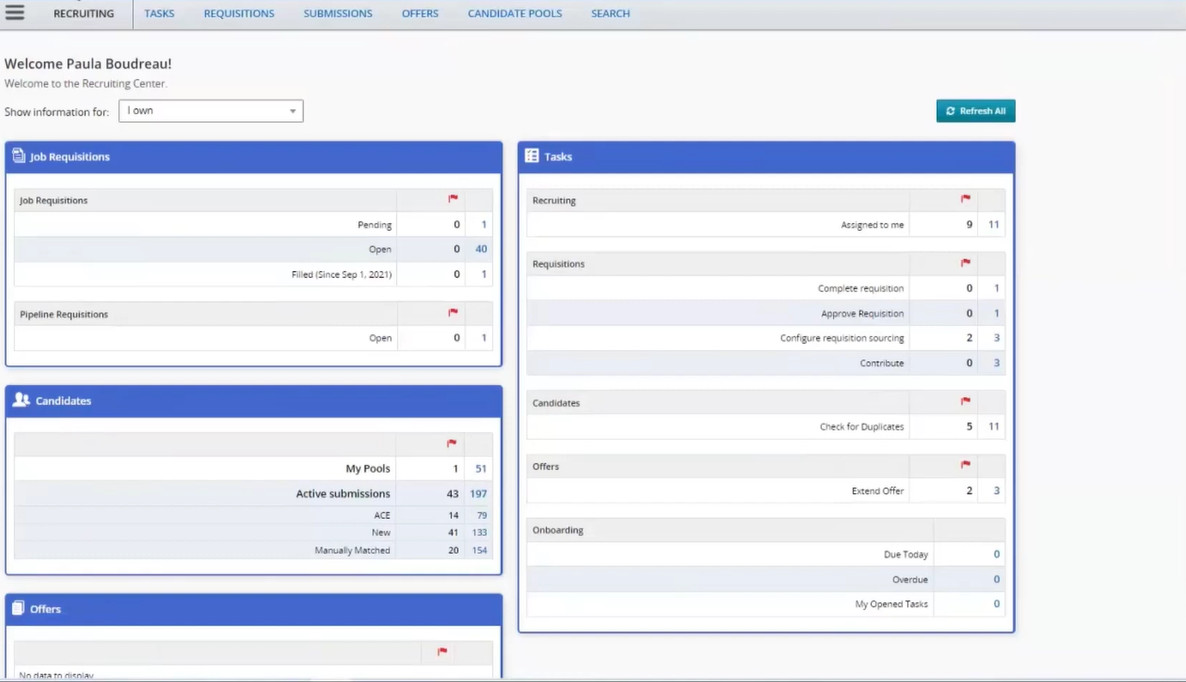
G2 rating: 3.4/5 based on 364 reviews.
Capterra rating: 3.8/5 based on 178 reviews.
Taleo's typical customers span industries like Computer Software (7%), Retail (6%), Hospital & Health Care (6%), Human Resources (5%), Higher Education (5%), and Medical Practice (4%).
According to G2, 60% of customers have more than 1000 employees, 28% have 51-1000 employees, and 12% have fewer than 50 employees. Capterra reviews show 21.6% of customers with more than 10,000 employees, and smaller shares across other size categories.
Taleo Pricing:
Oracle Taleo Cloud Service offers multiple subscription options, including:
Hosted Employee Subscription: Charges range from $0.50 to $5 per employee, depending on the minimum commitment and plan type.
Hosted Named User Subscription: Ranges from $0.50 to $1.50 per user, also based on commitment.
Optional Add-Ons: Includes services like test environments, VPN setup, and Oracle Database Vault, each with specific one-time or monthly fees.
Professional and Support Services: Custom pricing for remote system administration, data migration, integrations, and priority support, tailored for enterprise-level needs.
Taleo Pros:
- Ease of Use/User-Friendly Interface: Mentioned 29 times. Users appreciate the intuitive design and simplicity, making it accessible for users with varying levels of tech proficiency.
- Comprehensive Talent Management: Mentioned 18 times. Taleo is valued for its ability to manage the entire lifecycle of talent management, from recruitment to retirement, including performance management and learning development.
- Integration Capabilities: Mentioned 14 times. The ability to integrate with other systems, including ERP, EPM, and third-party software, is highly regarded for streamlining processes.
Taleo Cons:
- User Interface and Usability Issues: Mentioned 23 times. Users find the interface outdated, not intuitive, and sometimes clunky, highlighting a need for modernization and improved usability.
- Integration and Compatibility Challenges: Mentioned 12 times. Difficulties in integrating Taleo with other systems (e.g., ADP, Oracle modules) and issues with mobile integration were highlighted, indicating a need for better interoperability.
- Performance and Speed Concerns: Mentioned 11 times. Users experience slow performance, freezing, and browser compatibility issues, suggesting optimization is needed for a smoother experience.
- Complexity and Learning Curve: Mentioned 10 times. The system is described as complex and difficult to navigate, with a steep learning curve for new users, indicating a need for simplification and better training resources.
- Reporting and Analytics Limitations: Mentioned 9 times. Reports and dashboards are criticized for not being customizable or user-friendly, pointing to a need for more flexible reporting tools.
- Cost and Pricing Structure: Mentioned 8 times. Concerns about the cost, especially for large organizations and the pricing model based on headcount rather than actual users, suggest a need for more transparent and flexible pricing options.
- Customer Support and Technical Assistance: Mentioned 7 times. Users report challenges in obtaining timely and effective support, indicating a need for improved customer service.
- Limited Customization and Flexibility: Mentioned 6 times. The software's limited customization options for specific organizational needs and processes were noted, suggesting a need for more adaptable solutions.
- Data Management and Search Functionality: Mentioned 5 times. Difficulties with data migrations, ineffective search functions, and managing candidate information point to a need for enhanced data management capabilities.
- Outdated Technology and Features: Mentioned 4 times. References to the use of Flash and lack of modern features like drag-and-drop functionality indicate a need for technological updates to meet current standards.
Workable
Workable, founded in 2012, is an applicant tracking system based in Greece that raised $84.2 million.
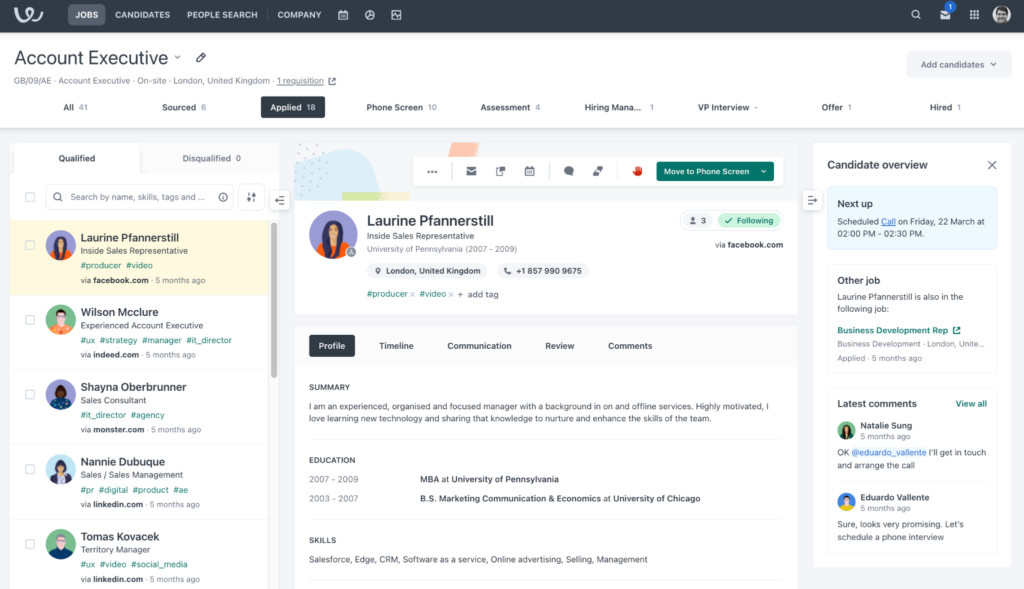
G2 rating: 4.6/5 based on 436 reviews.
Capterra rating: 4.4/5 based on 460 reviews.
Workable's typical customers are primarily based in the United States (32.63%), with smaller shares in the United Kingdom (12.69%), India (7.69%), Canada (4.05%), and the Philippines (3.8%). Key industries include Computer Software (18%), Information Technology and Services (9%), Marketing and Advertising (6%), Staffing and Recruiting (6%), and Real Estate (5%).
According to G2, 68% of customers have 51-1000 employees, 30% have fewer than 50 employees, and 2% have more than 1000. Capterra reviews show 33.6% of customers with 51-200 employees, and smaller shares across other size categories.
Workable Pricing:
Starter: For occasional hiring, priced at $149/month without HR and $189/month with HR. It includes basic recruiting features with options for texting, video interviews, and assessments.
Standard: For consistent hiring, starting from $360/month for smaller companies (up to $2,507/month for 201-500 employees) with HR, and custom pricing for 500+ employees.
Premier: For strategic hiring, starting from $599/month for smaller companies (up to $3,193/month for 201-500 employees) with HR, with custom pricing for larger companies.
Annual discounts and bundle options are available.
Add-ons include Client Portal ($6/license/month) and Video Interviews ($12/job or license/month).
Workable Pros:
- Ease of Use and Intuitive Interface: Mentioned 24 times. Users appreciate Workable's user-friendly design, which makes navigation and operation straightforward even for those with minimal technical expertise.
- Efficient Candidate Management and Tracking: Mentioned 22 times. The ability to manage multiple job postings, see all candidates in one dashboard, and easily move candidates through the hiring pipeline is highly valued.
- Collaborative Hiring and Team Involvement: Mentioned 18 times. Workable facilitates collaborative hiring processes, allowing team members to share feedback, rate candidates, and make informed hiring decisions together.
Workable Cons:
- Technical Issues and Integration Challenges: Mentioned 12 times. Users reported occasional bugs, slow performance, and difficulties with integrating Workable with other systems like Outlook and HRIS platforms.
- Limited Customization and Flexibility: Mentioned 11 times. Some users desire more customizable options for candidate evaluation, job stages, and reporting analytics.
- Customer Support Concerns: Mentioned 10 times. There were complaints about the responsiveness and effectiveness of Workable's customer support, including difficulties in reaching support and receiving helpful assistance.
- Pricing and Subscription Model Issues: Mentioned 9 times. Users expressed concerns over the pricing structure, including the cost of additional features and the lack of flexible pricing options for smaller businesses or those with intermittent hiring needs.
- Limited Search and Filtering Capabilities: Mentioned 8 times. The platform's search and filtering functions were seen as inadequate for efficiently managing and locating candidate information.
- User Interface and Usability Issues: Mentioned 7 times. Some users found the user interface to be cumbersome or not intuitive, particularly when managing multiple job openings or navigating between candidate profiles.
- Limited Reporting and Analytics Features: Mentioned 6 times. Users desired more comprehensive and customizable reporting options to better track recruiting metrics and performance.
- Difficulties with Email and Communication Features: Mentioned 5 times. Challenges were noted with the email functionality, including delays in notifications and confusion between internal comments and external candidate communications.
- Concerns with Candidate Management and Tracking: Mentioned 4 times. Users noted difficulties in managing candidates who apply to multiple jobs and a desire for better mechanisms to track and manage candidate progress through the hiring pipeline.
- Issues with Job Posting and Advertising Features: Mentioned 3 times. Some users expressed a desire for more control over job postings, including customization and broader distribution options.
Teamtailor
Teamtailor, founded in 2013, is an applicant tracking system based in Sweden that raised $15 million.
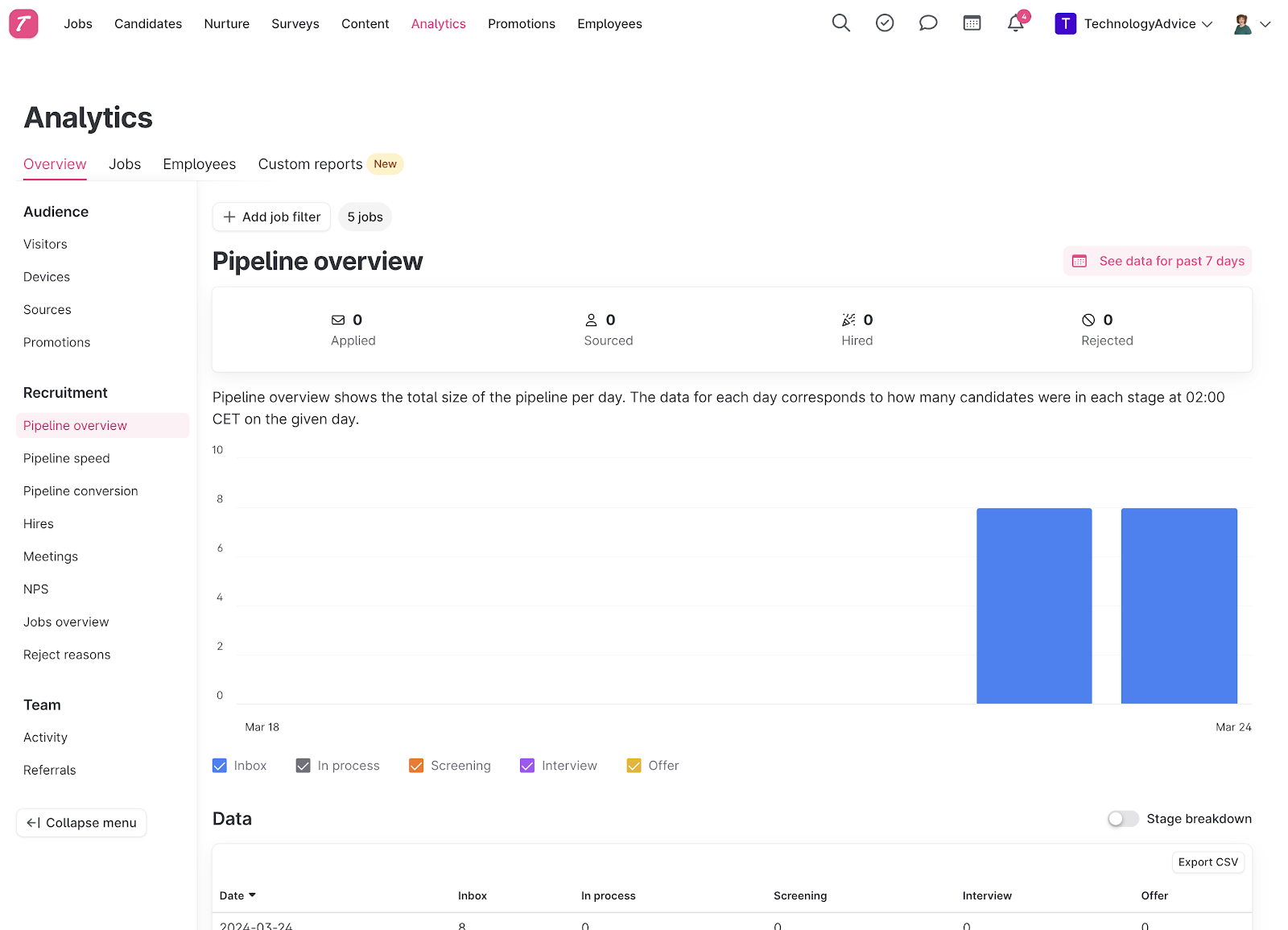
G2 rating: 4.6/5 based on 293 reviews.
Capterra rating: 4.6/5 based on 100 reviews.
Teamtailor's typical customers are primarily based in the United Kingdom (17.06%), with smaller shares in Sweden (11.92%), the United States (6.83%), Spain (6.54%), and France (5.35%). Key industries include Human Resources (18%), Marketing and Advertising (10%), Computer Software (10%), Retail (8%), and Renewables & Environment (5%).
According to G2, 80% of customers have 51-1000 employees, 13.3% have fewer than 50 employees, and 6.7% have more than 1000. Capterra reviews show 13% of customers with 51-200 employees, and smaller shares across other size categories.
Teamtailor Pricing:
Teamtailor's pricing varies, starting at around $200 per month for basic plans with unlimited users, job openings, and candidates, and full support. Based on usage data, annual costs can range from $7,000 to $72,000 depending on company size and requirements. Licenses typically start at $2,750 per year (approximately $229 per month), with pricing tailored for companies with 1-25 employees.
Teamtailor Pros:
- Ease of Use and Intuitive Interface (mentioned 15 times): Users praise Teamtailor for its user-friendly, visually appealing interface that simplifies recruitment and allows both HR professionals and hiring managers to navigate the system easily.
- Effective Customer Support (mentioned 13 times): The support team is noted for being responsive, helpful, and solution-oriented, providing guidance throughout setup and daily use.
- Automation and Workflow Optimization (mentioned 11 times): The platform’s automation features, including triggers and interview kits, help streamline the recruitment process and reduce manual work, making it more efficient.
Teamtailor Cons:
- Limited Customization Options (mentioned 10 times): Users wish for greater customization in career pages, email templates, fonts, and user interface elements to better match their branding and improve usability.
- Reporting and Analytics Limitations (mentioned 8 times): While the analytics tools look appealing, users find them lacking depth for in-depth data analysis or meaningful exports, such as tracking specific metrics more accurately.
- Occasional Bugs and Glitches (mentioned 8 times): Teamtailor experiences minor bugs, system freezes, and unexpected logouts that require restarting or re-logging, disrupting workflows.
- Integration Issues with Other Tools (mentioned 7 times): Users mention limitations in integrations with key tools, such as LinkedIn, Google Meet, HR systems, and calendar syncing, which impacts their workflow.
- Career Page Editing Constraints (mentioned 6 times): Users find editing the career page challenging, particularly with layout constraints and limited flexibility, which sometimes requires coding knowledge.
- Lack of Advanced Candidate Assessment Tools (mentioned 5 times): Users would like more comprehensive assessment tools, such as advanced scorecards and bias-reduction options, to improve candidate evaluation and ensure unbiased hiring.
- Email and Notification System Limitations (mentioned 4 times): Notifications and emails sent through Teamtailor can feel impersonal or redundant, and users desire options to adjust automatic messaging more freely.
- Slow Loading Times (mentioned 4 times): Some users experience slow page loads or occasional lag, especially when accessing the system from multiple locations or during high-traffic times.
- Duplicated or Confusing Candidate Records (mentioned 3 times): Users report issues with duplicate candidate profiles and challenges tracking candidates across different roles, especially when roles have similar titles.
- Frequent, Unnotified Updates (mentioned 3 times): Teamtailor’s frequent updates, while improving functionality, sometimes occur without prior notification, causing user confusion and a need for reorientation.
JobScore
JobScore, founded in 2004, is an applicant tracking system based in Brazil.
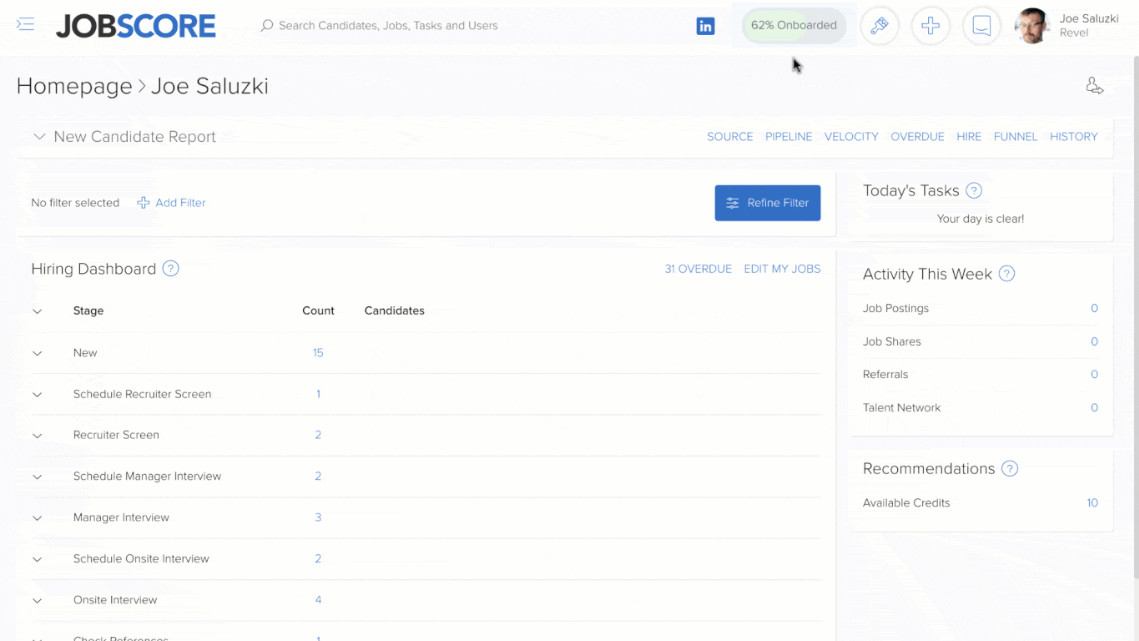
G2 rating: 4.2/5 based on 126 reviews.
Capterra rating: 4.2/5 based on 29 reviews.
JobScore's typical customers are primarily based in the United States (74.84%), with smaller shares in the United Kingdom (4.33%), India (4.14%), Canada (3.27%), and Australia (2.5%). Key industries include Internet (13%), Information Technology and Services (9%), Computer Software (9%), Events Services (9%), and Staffing and Recruiting (9%).
According to G2, 73.3% of customers have 51-1000 employees, 23.3% have fewer than 50 employees, and 3.3% have more than 1000. Capterra reviews show 27.6% of customers with 51-200 employees, and smaller shares across other size categories.
JobScore Pricing:
Start: $189/month for 5 open jobs, $759/month for 20 open jobs, or custom pricing for 25+ jobs, aimed at HR managers with essential features.
Scale: $599/month for 10 open jobs, $1,199/month for 20 jobs, or custom pricing for 25+ jobs, ideal for recruiters with expanded features.
Enterprise: Custom pricing for unlimited jobs, designed for high-volume recruiting.
A Lite plan is also available at $69/month for 2 open jobs. Annual billing offers up to 33% savings.
JobScore Pros:
- Ease of Use and User-Friendly Interface (mentioned 18 times): Users appreciate JobScore's simplicity and intuitive design, making it easy for both HR professionals and hiring managers to navigate and use the system effectively.
- Affordability and Cost-Effectiveness (mentioned 11 times): JobScore is highly valued for its competitive pricing, providing essential recruiting features that meet the needs of small and medium-sized businesses.
- Streamlined Job Posting and Integration with Job Boards (mentioned 10 times): The ability to post to multiple job boards with ease is a major time-saver, simplifying the process and increasing job visibility.
JobScore Cons:
- Non-Intuitive and Outdated User Interface (mentioned 9 times): Users find the UI/UX somewhat confusing and outdated, making it challenging to navigate, especially for new or non-technical users.
- Difficulty with Candidate and Interview Notes (mentioned 8 times): Many users struggle to locate interview notes or feedback submission areas, leading to inefficiencies in reviewing and recording candidate details.
- Limited Access to Features on Lower Plans (mentioned 6 times): Users expressed frustration with feature limitations on lower pricing plans, often needing to upgrade for additional functionalities.
- Complexity in Calendar and Scheduling Integration (mentioned 5 times): Scheduling interviews and syncing with calendars is challenging, as the integration with tools like Zoom and Outlook is not intuitive.
- Tedious Job and Candidate Management Workflow (mentioned 5 times): Managing candidates, adding applicants to specific jobs, and copying listings can be cumbersome and requires more manual input than expected.
- Excessive Reminders and Notifications (mentioned 4 times): Automated reminders, especially post-interview and task reminders, can be excessive and clutter inboxes, leading to user frustration.
- Bugs and Customer Support Limitations (mentioned 4 times): Users report persistent bugs with updates and describe customer support as slow, with limited response options even for enterprise-level accounts.
- Difficult Report Generation and Filtering (mentioned 3 times): Generating reports can be confusing, with limited filter options, making it hard to extract necessary information, especially across departments.
- Password and Login Frustrations (mentioned 3 times): Users find it inconvenient to re-enter passwords frequently, even when using saved login credentials.
- Limited Candidate Search and Navigation Features (mentioned 3 times): Searching for candidates by specific criteria is challenging, as the platform lacks advanced search functions, requiring additional time to find relevant profiles.
TalentLyft
TalentLyft, founded in 2016, is an applicant tracking system based in Croatia that raised $300,000.
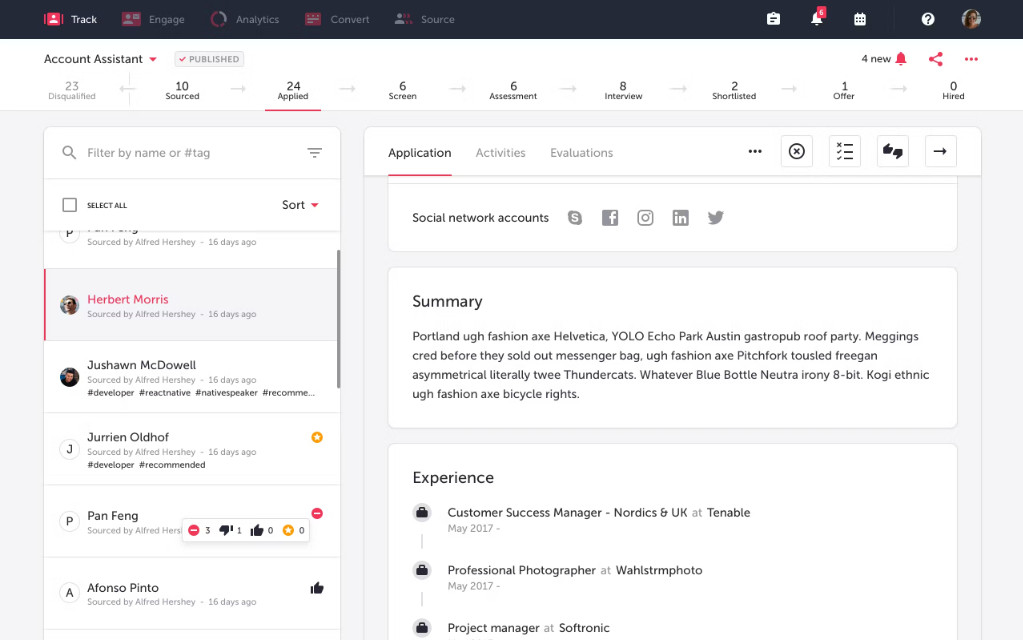
G2 rating: 4.9/5 based on 32 reviews.
Capterra rating: 4.8/5 based on 50 reviews.
TalentLyft's typical customers are primarily based in Croatia (18.12%), with smaller shares in the United States (6.76%), Bosnia and Herzegovina (5.66%), India (5.24%), and Canada (3.95%). Key industries include Information Technology and Services (31%), Banking (10%), Retail (10%), Food & Beverages (5%), and Industrial Automation (5%).
According to G2, 53.3% of customers have fewer than 50 employees, 40% have 51-1000 employees, and 6.7% have more than 1000. Capterra reviews show 32% of customers with 51-200 employees, and smaller shares across other size categories.
TalentLyft Pricing:
TalentLyft offers three main plans:
Essential: From $73.50/month (2 jobs) to $823.50/month (50 jobs), includes branded careers page, recruiting pipeline, job board syndication, and GDPR compliance.
Growth: From $148.50/month (2 jobs) to $1,648.50/month (50 jobs), adds multiple branded pages, custom workflows, requisition management, and electronic signatures.
Enterprise: Custom pricing for unlimited jobs, features full support, SSO, advanced reporting, custom data import, and up to 30% discounts on job boards.
Annual billing offers up to a 16.7% discount.
TalentLyft Pros:
- User-Friendly and Intuitive Interface (mentioned 18 times): TalentLyft is praised for its easy-to-navigate, simple interface, making it accessible to users without extensive training.
- Efficient Candidate Tracking and Centralized Information (mentioned 15 times): Users appreciate having all candidate information, communication, and history in one place, improving team collaboration and tracking.
- Strong Customer Support (mentioned 13 times): The TalentLyft support team is frequently highlighted as responsive, friendly, and helpful, assisting with onboarding and ongoing questions.
TalentLyft Cons:
- Limited Integrations (mentioned 5 times): Users noted that TalentLyft lacks integration options, particularly for video interviewing tools, email clients, and HR assessment tools.
- Career Page Editing Limitations (mentioned 5 times): The customization of the career page, especially for arranging articles and creating layouts without developer assistance, could be improved.
- Occasional Lag or Glitches (mentioned 4 times): Some users reported sporadic lag or downtime, although these issues were usually resolved quickly.
- Inconsistent Email Notifications (mentioned 3 times): Users found that automatic emails sometimes fail to send to certain candidates, which can create inconsistencies in communication.
- Lack of Mobile App and Mobile Functionality (mentioned 3 times): A few users expressed a desire for a mobile app or improved functionality on mobile devices.
- High Price Point (mentioned 2 times): TalentLyft’s pricing was noted as potentially high, although it is generally seen as delivering good value.
- Learning Curve with Features (mentioned 2 times): Some users found it initially challenging to learn and navigate all of TalentLyft’s features.
- Occasional Bugs and Errors (mentioned 2 times): Users encountered intermittent bugs, particularly with referral emails going to spam and system errors preventing certain actions temporarily.
- Improvement Needed in Candidate Communication Management (mentioned 2 times): Users suggested having all candidate communications centralized within TalentLyft instead of emails going to personal accounts.
- Lack of In-Depth Data Management Tools (mentioned 2 times): A few users expressed a need for more advanced data management and visualization capabilities within the platform.
the best candidates faster




